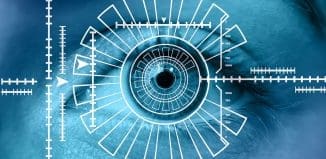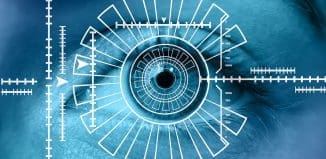Iris Scanning Technology – the New Digital Border Wall
This post is also available in:  עברית (Hebrew)
עברית (Hebrew)
Biometric technology has been taking a leading role in the deterrence of unauthorized immigrants at the US-Mexico border.
Recently, 31 sheriffs, representing every county along the border, voted unanimously to adopt tools that will capture, catalogue, and compare individuals’ iris data, for use both in jails and out on patrol.
According to theintercept.com, Biometric Intelligence and Identification Technologies (BI2), the company behind the push, has offered the sheriffs a free three-year trial, citing law enforcement’s difficulties in identifying unauthorized immigrants whose fingerprints can be disfigured through manual labor or self-inflicted wounds.
Iris recognition is just the latest surveillance technology helping fortify what the White House hopes will make up a “digital wall,” a concept that many border sheriffs view as less intrusive than Trump’s envisioned 30-foot barricade.
For law enforcement, the tool promises to help identify people without reliable fingerprints and to deter repeat border crossers. And for the company, rapid border expansion means its existing national iris database will receive a huge influx of biometric information on unauthorized immigrants, boosting its product’s capabilities to potential law enforcement clients across the country.
In the coming months, BI2’s iris recognition devices will be installed in every sheriff’s department along the U.S.-Mexico border. Each department will receive both a stationary iris capture device for inmate intake facilities and, eventually, a mobile version.
The technology works by taking a high-resolution image of a person’s iris with a special infrared illumination camera, and then creating an individualized iris template based on that image. The templates exploit nearly 240 unique characteristic elements in the iris, compared to the 40 to 60 used for fingerprints, resulting in far fewer false matches.
To make an identification, BI2’s iris recognition program compares an individual’s iris against the over 987,000 iris scans held in its private database, which collects images from over 180 law enforcement jurisdictions nationwide.





























